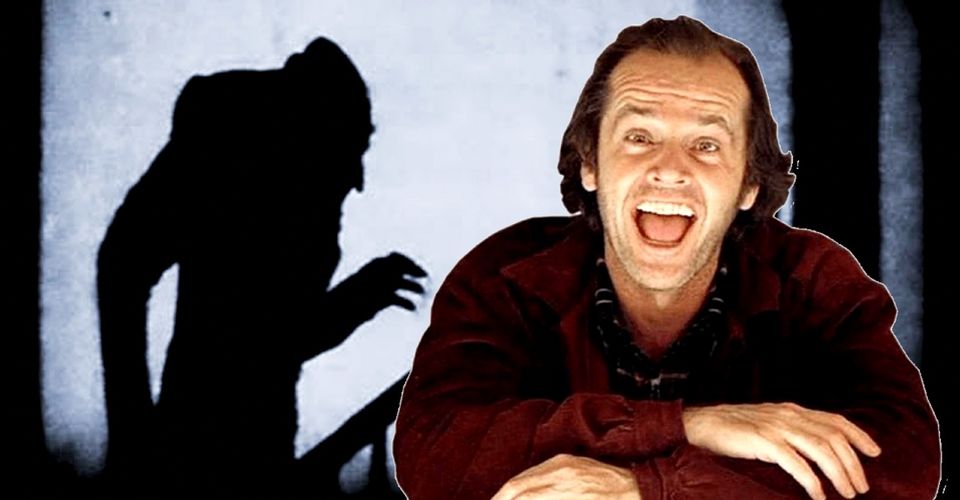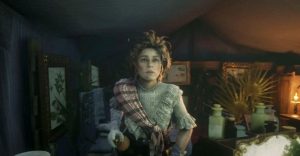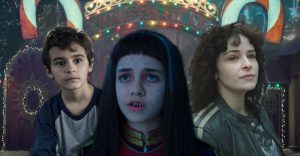5 Artsy Horror Movies That Are Overhyped (& 5 That Are Actually Brilliant)

There has been a recent resurgence with artsy and avant-garde entries in the horror genre. With films like The Babadook and The Shape of Water taking home some serious acclaim, it’s actually quite impressive to see how far the genre has come from the fright-fests of yesteryear.
While some artsy horror flicks are ingenious, others either come off as pretentious or overstay their welcome. After all, gore and gimmicks do not a good horror movie make. So the question is when is being artsy in a horror flick expressive and when is it just being excessive?
10 Overhyped: Nosferatu (1922)

Nosferatu will always be a titan of the horror genre and a pinnacle of its history. But those expecting something akin to Bela Lugosi’s immortal performance as Dracula will be somewhat bewildered. It is, unfortunately, now more of an acquired taste.
For starters, it’s a silent movie that might deter some viewers. Second, while its German expressionism presentation can result in some eerie and unsettling imagery, the over-the-top pantomime can also be a tad goofy at times.
9 Brilliant: The Void (2016)

Lovecraftian horror can often be a hard subject to bring to film but if there was ever a flick that came shockingly close, it’s The Void. The horrors of evil cults, other dimensions, and the terror of inner space are fully realized in this John-Carpenter-Inspired flick.
The fear of the unknown is one that plagues many moviegoers, and this freaky flick plays with that notion tremendously before assaulting the viewer with ungodly terrors. Lovecraft would be proud.
8 Overhyped: Suspiria (1977)

Like Nosferatu, Suspiria was a titan in the genre, particularly bringing focus to the Giallo films of Italian cinema. But some modern audiences might be a tad confused upon viewing it today.
Gore is the name of the game in this twisted tale of dancing, demons, and witchcraft. But those trying to follow the plot with Dario Argento’s psychedelic visuals might find it a bit perplexing. Still, the scenes with the skylight and the pianist’s murder are chilling to behold.
7 Brilliant: Crimson Peak (2015)

If anything, Crimson Peak is an underrated gem, but that’s probably due to the poor marketing campaign that tried to bill it as a supernatural slaughter-fest rather than a gothic fairytale. It has its gore, its gruesome ghosts, and its body count, but behind that lies a truly beautiful story.
The film is certainly one of Guillermo del Toro’s classics, and the story, set pieces, and spirits are like something out of a book by Edgar Allen Poe. The words “hauntingly gorgeous” certainly spring to mind.
6 Overhyped: Us (2019)

Jordan Peele is undoubtedly one of the most brilliant horror directors of the 21st century, but his follow-up to his Oscar-winning Get Out might be a little hard to swallow for some. It’s the deeper and more psychological elements of the narrative that dock it down a few pegs.
The idea of evil doppelgangers is scary enough on its own, not much extra is needed. But the backstory of a secret experiment taking place in tunnels underneath the US is a bit excessive.
5 Brilliant: The Witch (2015)

The Witch is a different kind of scary, and that’s putting it lightly. Watching this historical horrorshow is a mix of a traditional monster movie with sacrilegious cinema. One of the titular witch’s first victims is literally a baby, and things only get much more gruesome from there.
Those expecting something out of The Crucible will be shocked and horrified at just how twisted this film gets in its storytelling, its presentation, and its scares. The dialogue might need subtitles at times, though.
4 Overhyped: The Lighthouse (2019)

Robert Eggers might have spellbound the horror-hounds with The Witch, but his follow-up film, The Lighthouse often toed the line between creepy and confusing. Granted, the performances from both Willem Dafoe and Robert Patterson were certainly Oscar-worthy, but the plot is absolutely confounding.
When viewers need to consult various theories and speculation to get a straight answer out of the plot, the ambiguity is a bit overdone. Madness and isolation are great tropes for the genre to explore, but the audience doesn’t need to be maddened, too.
3 Brilliant: Coraline (2009)

It might be animated, it might be a film with a young audience, but Coraline is a stop-motion nightmare that deserves a spot next to the likes of It and A Nightmare on Elm Street. As artsy and eccentric as it is, it never fails to leave even many adult viewers with a case of the shivers.
Just as unsettling and disturbing as Neil Gaiman’s original novel, Coraline plays with the archetypes of haunted houses, creepy dolls, and black cats to turn it into something truly terrifying. Perfect for introducing young fans into the genre.
2 Overhyped: Hereditary (2018)

Hereditary is a frightening feature, that much is undeniable. But its confusing plot and heavy reliance on guttural expressions of grief can cause more than a few viewers to lose interest. It can certainly take a few viewings to get the complete story, but not without the want of carnage.
Demonic entities, creepy cults, psychological breakdowns, and massive amounts of mutilation are all great horror ingredients. But when they’re stuffed in a plot that’s easy to get lost in, they kind of lose their luster.
1 Brilliant: The Shining (1980)

Perhaps no horror film in history has been studied and reinterpreted more than Stanley Kubrick’s The Shining. Based on Stephen King’s novel of the same name, few films have even come close to reaching this flick’s notoriety.
Despised by the author but loved by critics and film scholars, the tale of Jack Torrance’s descent into madness inside a haunted hotel has terrified thousands with its use of spectacle, scale, and psychological horror.
About The Author

















